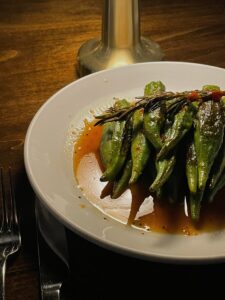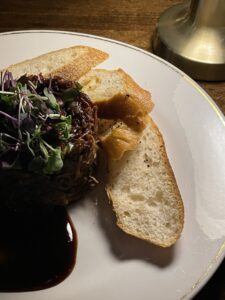Hannah Im | Discussion Post #5
Just last month, I went to a restaurant in Midtown called The Consulate. The restaurant has a rotating menu, The Visa, that features dishes from a specific country for 90 days. After three months, the most popular dishes move to a different menu called The Resident, where one can order top dishes from past countries, and a new country is featured on The Visa. I went when food from Korea was featured; as a Korean-American, it was a fun experience to try gourmet food from my country.



In just one dinner, I was able to taste a bit of Cambodian, Thai, and Korean culture. The menu also features Ethiopian lamb tibs, Italian octopus, Cuban egg rolls, and Filipino pancit, among a variety of other dishes. The restaurant provides an “Around the World in 80 Days” experience in the form of food.
While The Consulate’s concept is a literal example of globalization, food in general is a representation of this concept. Both now and during the Baroque era, spices, dishes, and native ingredients are traded and provide a taste of one’s culture. Food is an easily shareable item, highly unique to a region, and appealing to all of our five senses. The bùcaro was a symbol of globalization for its ability to make water taste sweeter; likewise, food’s ability to make a strong impression on our sense of taste, smell, and sight makes it a powerful vehicle for the sharing of cultures.

Yum! Thanks for sharing!